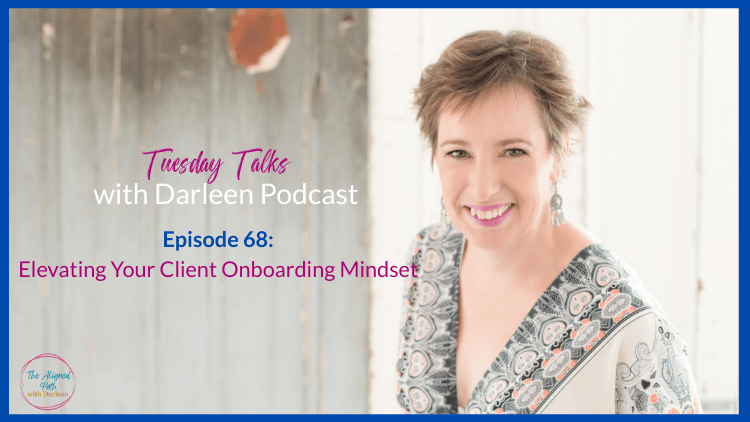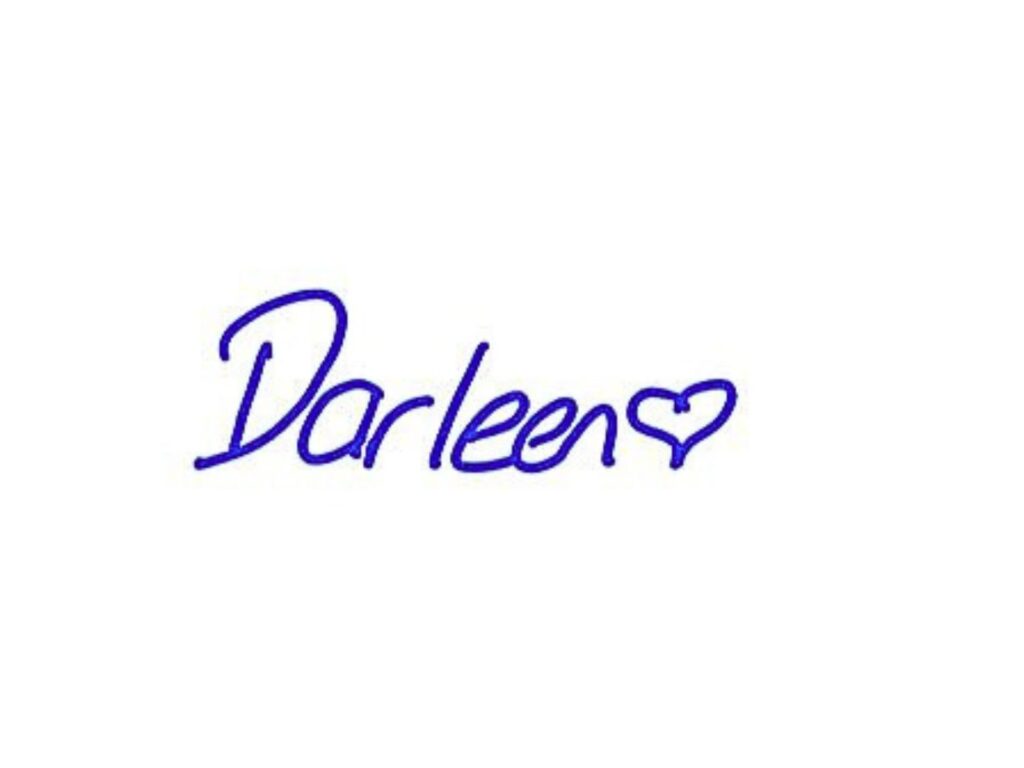Client onboarding is more than a behind-the-scenes task, it is the energetic foundation of a working relationship. The moment someone expresses interest, the experience begins. It’s not just a form, a link, or a calendar booking. It’s the first exchange of trust, care, and clarity that shapes how supported someone feels before the official work even begins.
This process sets the tone for everything that follows. When approached with presence and intention, it builds connection, safety, and confidence. And when left unstructured or rushed, it can create confusion, hesitation, and missed opportunities for alignment. Client onboarding is not only about logistics. It is about energy. It’s about the way a business chooses to meet someone new, with integrity, spaciousness, and emotional awareness. The invitation is to hold that space with care, long before the “work” technically begins.

EPISODE 68: Listen using the player below, or click the links to your fave platform to subscribe and listen over there:
Structuring the Onboarding Process With Care
Every step in the onboarding journey carries an energetic message. A timely email says, “You’re being held.” A clear booking flow says, “Your time matters.” Thoughtful reminders say, “You haven’t been forgotten.” These small moments become part of the container. They send signals of reliability, presence, and professionalism, without ever needing to say those words directly.
In soul-led work, the emotional tone of each interaction matters just as much as the information itself. A booking link isn’t just a link. It’s an energetic doorway. A confirmation email isn’t just admin, it’s reassurance. These are the invisible threads that begin weaving safety and trust into the relationship. When approached from this lens, the onboarding process shifts from task to touchpoint.
-
The onboarding process begins the moment a potential client reaches out. This is not just an inquiry, it is the start of an energetic exchange. The way the message is received, how quickly the response is sent, and the tone of that response all contribute to how safe and welcomed that person feels.
-
A clear and simple booking process, supported by automated reminders, reduces confusion and provides structure for both parties. Using tools that sync time zones, clarify call logistics, and remind the client in a timely manner ensures they are held every step of the way.
-
Emails that include the client’s time zone, platform details, and warm guidance offer reassurance, especially for those navigating international time differences. A simple line acknowledging their location can help them feel seen and considered.
-
When a client is not the right fit, compassionate offboarding through a kind message and referral maintains integrity and honours their experience. Saying no gently is also part of the onboarding process, it models care and alignment, even when the answer isn’t a yes.
These processes don’t need to be complicated. They need to be intentional. And when they are, they carry a frequency of grounded professionalism that’s felt by every client.
Supportive Tools and Gentle Systems
Client onboarding is not a one-size-fits-all system. It can be adapted to match the rhythm and energy of each business. The tools used are not just technical, they are supportive vessels that hold the client experience. And when those tools are chosen with intention, they become part of the sacred structure that supports the container.
Clarity supports the nervous system. It helps clients feel emotionally safe, mentally prepared, and energetically supported. When they know what to expect, when sessions happen, how to prepare, what’s included, and how to reach out if something changes, their system can relax into the process. That trust creates better results, deeper connection, and stronger outcomes for both client and practitioner.
-
A well-crafted onboarding pack, shared after the agreement is made, includes essential information like session structure, rescheduling policies, and terms of service. This isn’t about legal jargon, it’s about providing clarity. Clients want to know what to expect, and clear guidance allows them to show up more fully.
-
A short workbook with journaling prompts and space for notes gives clients a tangible anchor. For visual learners, this adds depth and continuity between sessions. It also creates a sense of being guided and supported, even in the spaces between direct contact.
-
Ongoing communication through periodic check-ins during the container reinforces care, even between calls. These messages remind the client that their growth is witnessed and supported. Even a simple email with reflection prompts can offer powerful moments of integration.
When systems are built from a place of compassion and clarity, they support not only the client’s journey, but the practitioner’s energy, too.
Shifting the Mindset Around Onboarding
Many intuitive business owners feel resistance around systems, not because they don’t value support, but because of mindset beliefs that arise. These beliefs often sound like quiet doubts or internal objections. They can feel like protection, but often, they are barriers to deeper clarity and ease.
It’s not uncommon to delay setting up onboarding processes out of fear that they’ll feel too rigid, too formal, or too impersonal. But when these systems are infused with warmth, they become expressions of care. They become part of the service, not separate from it. What’s often needed is a mindset shift that reframes structure not as restriction, but as support.
-
“It’s too much for just a few sessions.” But what if those few sessions are deeply transformative? What if they’re the beginning of long-term trust or a future referral? Every experience matters.
-
“This will take too long to create.” But the time invested now saves energy later. A repeatable system gives more space, more presence, and more freedom.
-
“My client might feel overwhelmed by too many steps.” But overwhelm comes from confusion, not from clarity. A well-paced, gently designed onboarding sequence reduces stress, it doesn’t add to it.
Instead of aiming for perfection, the focus can be on presence. Build slowly. Start with one email. One document. One thoughtful step. Allow the process to evolve, just like the business itself.
Allowing Systems to Support Growth
Creating systems isn’t just for the client, it’s for the business as a whole. A well-mapped onboarding process offers relief to the nervous system. It creates more space, more clarity, and more confidence in the backend.
When the process is held by tools and templates, there’s less to remember. That frees up creative energy, emotional bandwidth, and presence during client sessions. It also reduces decision fatigue, which allows for better focus on what truly matters, holding space and delivering transformation.
-
A simple task-tracking tool like Asana can hold each step of the onboarding journey, reducing mental load and increasing consistency. Instead of holding every to-do in your head, the system holds it for you, freeing up space to be fully present with your clients.
-
Templates make it easier to duplicate, adjust, and refine with each new client. This supports sustainability as the business grows. A consistent flow reduces stress, increases professionalism, and allows each client to receive the same level of care.
-
Feedback from clients can guide improvements. If something feels unclear or overwhelming, it can be softened. If something is missing, it can be added. Let the onboarding evolve with you. Each round is a chance to refine—not to perfect, but to realign.
Systems are not static. They are living structures. When built from intention, they grow alongside the business and evolve with every season.
Final Reflections
Client onboarding is an energetic invitation. It’s a quiet way of saying, “You matter here.” When the process is built with care, it supports more than just a beginning. It holds the entire relationship. It reinforces trust. It frees up emotional energy. And it signals that the business is not only operational, but intentional.
It’s not about complexity or perfection. It’s about clarity, warmth, and presence. A system that feels good to create will feel good to receive. And when both client and practitioner feel supported from the very first step, deeper transformation becomes not only possible, but inevitable.
Here for the links that may have been referenced in the show or is complementary to this episode.
- Podcast – Ep 93: Confidentiality and Client Safety
- Podcast – Ep 103: Business Needs Safety and Structure
- Podcast – Ep 100: Business Relationship and Energetic Identity
More in-depth content and resources:
- Blog Post – Sales That Feel Safe (Not Sleazy)




